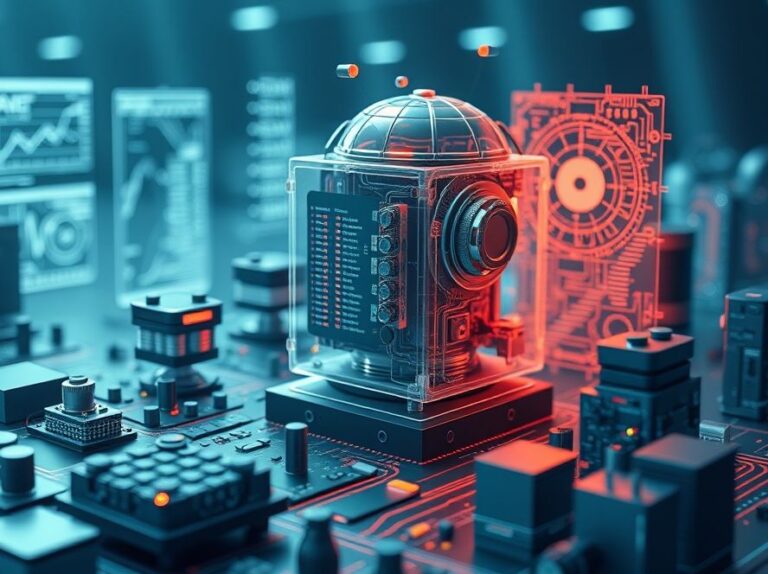Understanding Python Libraries
Python libraries are collections of pre-written code that allow developers to implement specific functionalities without having to write code from scratch. These libraries simplify tasks, enhance productivity, and provide a robust framework for various applications. With thousands of libraries available, they cater to different needs, from data analysis to web development and machine learning.
The Importance of Python Libraries in Development
In modern software development, Python libraries play a crucial role. They save time and resources, allowing developers to focus on building features rather than reinventing the wheel. For instance, libraries like Pandas for data manipulation and Flask for web applications empower developers to create complex solutions efficiently.
Types of Python Libraries
Python libraries can be broadly classified into several categories:
- Data Science Libraries: Libraries such as NumPy, Pandas, and Matplotlib help in data analysis and visualization.
- Machine Learning Libraries: Libraries like TensorFlow and Scikit-learn provide tools for building machine learning models.
- Web Development Libraries: Flask and Django are popular frameworks for developing web applications.
- Game Development Libraries: Pygame is widely used for creating video games.
1. Data Science Libraries
Data science libraries have transformed how we handle data. For example, Pandas allows for easy manipulation of structured data. Here’s a simple example of how to use Pandas to read a CSV file:
import pandas as pd
data = pd.read_csv('data.csv')
print(data.head())This snippet will load a CSV file and display the first five rows of the data, showcasing how quickly you can start working with data.
2. Machine Learning Libraries
Machine learning has become accessible thanks to libraries like Scikit-learn. Below is an example of how to create a simple linear regression model:
from sklearn.linear_model import LinearRegression
model = LinearRegression()
# Assuming X_train and y_train are defined
model.fit(X_train, y_train)This code trains a linear regression model, demonstrating the ease of implementing machine learning algorithms with Python libraries.
3. Web Development Libraries
Web development in Python has gained popularity with the introduction of frameworks like Django. Here’s how you might set up a basic web application:
from django.shortcuts import render
def home(request):
return render(request, 'home.html')This snippet shows how to create a simple view in Django, highlighting the framework’s structured approach to web development.
4. Game Development Libraries
For aspiring game developers, Pygame provides an excellent platform. Here’s a basic example of initializing a game window:
import pygame
pygame.init()
window = pygame.display.set_mode((800, 600))
pygame.display.set_caption('My Game')This code initializes Pygame and creates a window for your game, making the process of game development straightforward.
Practical Applications of Python Libraries
Python libraries are not only theoretical constructs; they have real-world applications across various domains. Here are some practical uses:
- Data Analysis: Businesses use libraries like Pandas and NumPy to analyze sales data and forecast trends.
- Web Applications: Startups build scalable web applications using Flask and Django to manage user interactions and data.
- Machine Learning Solutions: Companies implement machine learning algorithms using TensorFlow to enhance customer experiences.
How to Get Started with Python Libraries
If you’re a beginner looking to dive into Python libraries, here are some steps to get you started:
- Install Python and a package manager like pip.
- Familiarize yourself with basic Python syntax.
- Start with popular libraries like NumPy and Pandas for data manipulation.
- Explore documentation and tutorials to understand how to implement various libraries in real projects.
For instance, using pip, you can easily install a library by running:
pip install pandasThis command installs the Pandas library, allowing you to begin your data analysis journey.
Related Concepts
Understanding Python libraries also involves familiarizing yourself with related concepts. Here are some terms that are often associated:
- Frameworks: More extensive structures built on libraries, such as Django and Flask.
- APIs: Application Programming Interfaces that allow different software components to interact.
- Modules: Individual files containing Python code that can be imported into your projects.
Conclusion
Python libraries are indispensable tools for developers at all levels. They not only facilitate coding but also empower developers to create sophisticated applications efficiently. Whether you’re analyzing data, building web applications, or developing games, understanding and utilizing Python libraries is essential for a successful career in technology.
As you embark on your journey with Python libraries, take the time to explore their documentation, experiment with examples, and apply your knowledge in real-world projects. The more you practice, the more proficient you’ll become.
Remember, the world of Python libraries is vast and ever-evolving, so stay curious and keep learning!









